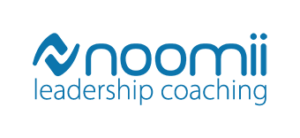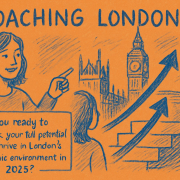What Is Noomii: The Smarter Way to Find the Right Coach in 2025
Finding the right coach used to feel like guesswork. You’d scroll through endless websites, skim bios, and hope someone matched your goals. Coaching is now a serious investment, and people want real outcomes, not hype. In 2025, the way we find help looks different. Clarity matters.
Noomii makes that possible. It’s a coaching directory built to help people connect with verified professionals who fit their goals, personality, and pace. The idea is simple: better matches create better results. Whether you want to grow your business, strengthen your mindset, or change careers, Noomii helps you start right.
If you’ve wondered what is Noomii or why it’s gaining attention, this guide explains how it works, who it helps, and how it’s changing how people find the right coach in 2025.
1. What Is Noomii and How Does It Work?
Noomii is a global online platform that connects clients with qualified coaches across dozens of categories. You can find life coaches, executive mentors, relationship specialists, and more. It’s designed to save time while improving the quality of the match between client and coach.
How Noomii Connects Clients with Verified Coaches
Every coach listed on Noomii passes a background and credential check. Clients fill out a short form about goals and challenges, and the system recommends matches based on those details. This simple process removes the awkward guesswork that comes from random Google searches or word-of-mouth lists.
Coaches benefit too. They connect with clients who are already looking for their exact expertise. That balance helps both sides start faster and build trust sooner.
Key Features That Make Noomii Different from Other Coaching Platforms
Most coaching sites just post profiles. Noomii adds structure and support. You’ll find verified reviews, pricing info, and scheduling tools. You can message coaches directly, request a discovery call, or ask specific questions before you commit. This transparency builds confidence and helps clients feel safe choosing a coach they haven’t met yet.
Why “What Is Noomii” Is One of the Most Searched Coaching Questions in 2025
Coaching is more common than ever, but it’s also more crowded. People want guidance but don’t know where to start. That’s why searches for what is Noomii are rising—it’s the name that comes up when people ask, “Where can I find a trusted coach online?”
AI-driven coach matching explained
Noomii uses a mix of data and human review to suggest the right matches. The system looks at background, communication style, and client feedback patterns. That creates more accurate connections.
Client reviews and accountability tools
After sessions, clients can leave feedback. Those reviews stay visible, helping others make better decisions and holding coaches accountable.
The growth of digital coaching networks in 2025
Online coaching has moved from niche to normal. Noomii gives that trend structure by connecting serious clients with serious professionals.
If you’re ready to find a coach who fits your goals, Noomii gives you a clear starting point without the sales pressure.
2. Inside the Noomii Life Coach Directory
The Noomii Life Coach Directory is where everything begins. It organizes thousands of verified professionals in one place so clients can compare coaching styles, areas of focus, and credentials quickly.
How the Noomii Life Coach Directory Helps You Narrow Your Choices
Instead of random browsing, you can filter by location, language, specialty, or experience level. Want a leadership coach who works remotely? Or a wellness coach who focuses on accountability? You can sort for that. Each filter removes guesswork, saving time and mental energy.
Many users start by reading reviews or browsing by life stage—like mid-career changes, entrepreneurship, or confidence building. This practical approach helps people who’ve never worked with a coach before take the first step with clarity.
The Benefits of Using a Centralized Coaching Directory
Everything happens inside one system. You can message, schedule, and compare coaches without juggling multiple tabs or websites. For busy people, that simplicity matters. Coaches can also update their profiles with fresh content or client insights, so listings stay relevant.
Tips for Filtering by Specialties, Reviews, and Results
Start by asking what you need most: clarity, direction, or accountability. Then look for coaches who specialize in that area. Reviews help confirm results, not promises. Many clients filter by measurable outcomes—like improved confidence, business revenue, or better communication skills.
Filters and matching criteria
Filters make it easy to narrow options fast. You can see who’s nearby, who offers virtual sessions, and who fits your price range.
Directory safety and quality assurance
Profiles are reviewed for accuracy. If a coach gets repeated negative feedback, the listing may be paused or removed.
Verified profiles and client testimonials
Testimonials give insight into a coach’s personality and methods. Honest stories matter more than flashy claims.
If you’re new to coaching, browsing the directory can give you a feel for what’s possible before you book a call.
3. Coaching Directory vs. Noomii: What Makes Noomii Different?
A typical coaching directory just lists profiles. Noomii goes further. It helps clients actually find the right person instead of getting lost in a crowd.
Common Problems with Traditional Coaching Directories
Traditional directories are cluttered. They lack reviews, offer little guidance, and don’t verify credentials. That creates frustration for clients and lost opportunities for good coaches.
How Noomii Brings a Human Element to an Online Platform
Every coach profile on Noomii tells a story. You see personal statements, focus areas, and clear descriptions of how they work. You can reach out directly, which keeps things human even in an online space.
The Advantage of Data-Backed Coach Matching
Noomii uses data patterns to improve over time. It learns what types of clients work best with which coaches. That feedback loop makes each new match more accurate than the last.
Industry comparisons (Coach.me, BetterUp, etc.)
Other platforms often focus on enterprise or corporate programs. Noomii balances both—serving individuals, small business owners, and teams.
Building trust in the coaching marketplace
People trust transparency. That’s why every profile includes contact info, education, and clear pricing.
How Noomii maintains transparency for users
Clients always know who they’re talking to and what they’re paying for. There are no hidden steps.
When people understand their choices, they make better ones. That’s the quiet advantage Noomii brings to coaching.
4. Finding the Right Coach in 2025: What to Look For
Choosing a coach can feel like sorting through noise. Everyone sounds confident, but fit matters most.
How to Identify the Right Coach for Your Goals
Start with your problem, not the coach’s promise. What outcome do you want? A promotion? Less stress? Better leadership habits? When you’re clear, you can find someone who specializes in that outcome. Noomii’s filters help you focus on results instead of titles.
Red Flags When Choosing a Coach
Watch for exaggerated claims, unclear pricing, or pressure tactics. Real coaches talk about process and consistency, not instant transformation.
The Role of Noomii in Simplifying the Search
Noomii organizes everything in a simple way—credentials, experience, reviews, and availability—so you don’t waste time chasing information. It helps clients make calm, informed decisions.
Matching by outcomes, not buzzwords
Effective coaching is about results, not slogans. Noomii encourages real examples and measurable progress.
Understanding coaching certifications
Every verified coach lists credentials openly. That helps you avoid unqualified or uncertified practitioners.
Balancing price, experience, and specialization
Price doesn’t always equal quality. Some new coaches deliver great results because they’re motivated and engaged. Comparing options on Noomii makes those tradeoffs clear.
A coach isn’t a one-size-fits-all solution. Noomii gives you the data and structure to find someone who actually fits you.
5. Why Executive Coaching on Noomii Is Gaining Momentum
Professionals are rethinking success. It’s not just about titles or numbers—it’s about focus, communication, and resilience. Executive coaching helps build those habits.
What Makes Executive Coaching Different from Life Coaching
Life coaching often centers on motivation, personal habits, and confidence. Executive coaching looks at leadership, influence, and growth strategy. It helps leaders improve how they think, decide, and connect.
How Professionals Use Noomii to Accelerate Leadership Growth
Executives use Noomii to find coaches who specialize in communication, delegation, and leadership balance. Many mid-level managers use coaching to transition into senior roles.
The 2025 Trend: Coaching as a Performance Strategy
More companies now fund coaching for managers and teams. It’s viewed as a tool for performance, not a perk. Noomii has become a resource for both individuals and HR departments looking for proven professionals.
Remote executive coaching sessions
Virtual sessions make coaching more flexible. Leaders can meet before work or after hours without travel.
Coaching ROI for business leaders
Leaders track results—better meetings, improved morale, higher retention. Coaching success is measurable.
Industry-specific executive coaching niches
Tech founders, healthcare directors, and finance executives now seek targeted guidance. Noomii’s filters help them find experts in their exact industry.
For leaders, a coach isn’t about fixing problems—it’s about improving what already works. Noomii makes that easier to find and start.
6. The Future of Coaching: Why Noomii Leads in 2025 and Beyond
The coaching space keeps expanding, but connection still matters most. Noomii continues to focus on matching people, not algorithms.
How Noomii Is Shaping the Future of Coaching Discovery
People want more than listings—they want direction. Noomii’s data-driven tools guide users toward coaches who fit their behavior and goals. This approach keeps things efficient without losing the personal side.
Why Beginners and Professionals Trust the Noomii Platform
The transparency builds confidence. Clients know what to expect before the first session. Coaches appreciate that serious clients come through the platform, not random inquiries.
The Next Step: Start Your Coaching Journey with Confidence
Coaching works best when it’s simple to start. Noomii offers that simplicity. You can browse, filter, and message coaches without pressure. It’s not about selling—it’s about helping you take the next step toward better performance and clarity.
Predictions for AI and personalized coaching
AI will keep improving matching systems, but the human element will stay the center of coaching. Noomii balances both.
Expansion of niche coaching areas
Expect to see new coaching specialties—from stress recovery to creative coaching—added to the directory.
Noomii’s focus on results and accountability
At every level, Noomii’s goal is consistent: connect people with coaches who deliver progress they can see and measure.
If you’re ready to find a coach who fits how you think and what you want, Noomii gives you a clear, honest way to start.









